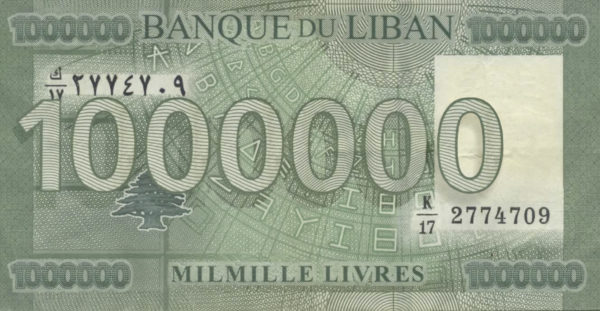The central bank governor’s looming departure raises questions over how the country’s political and economic elite enriched themselves at the expense of the public—even as their actions helped bring about an enormous economic crisis.
by Rany Ballout
Political backing for Lebanon’s central bank governor, Riad Salameh, appears to have started to wane, according to a report by Reuters citing political sources speaking on the condition of anonymity. Salameh himself has announced in an interview with Asharq News in February, and repeatedly afterwards, that he will not be seeking a new term in office once it expires in next month. However, there are unconfirmed reports that Salameh has already submitted his resignation in March to caretaker Prime Minister Najib Mikati. This reportedly is pending approval of the government, which is said to be a complex process due to the need to maintain a sectarian balance of power.
Meanwhile, investigations into Salameh’s alleged financial crimes in Lebanon and Europe are apparently gathering pace. Salameh is facing numerous accusations of alleged crimes, including embezzlement of public funds, corruption, illicit enrichment, and money laundering. European investigators returned to Lebanon in late April to continue questioning witnesses and individuals charged in Lebanon in connection with these allegations.
These developments are occurring against the backdrop of political paralysis, as the stalemate in electing a president for Lebanon persists. Yet at the same time, there is an urgent need to restore confidence in Lebanon’s financial and banking institutions as the country faces an unprecedented economic and financial catastrophe. The crisis—which combines a dire set of economic and financial factors, including hard foreign debt default, triple-digit inflation, severe currency devaluations, insolvent banks, an alarming GDP contraction, and an increasing shortage of basic goods—has been described by the World Bank as one of the worst in modern history. At this critical juncture, the selection of a central bank governor is almost as important as electing a president.
The Origins of Lebanon’s Economic Crisis
The causes of Lebanon’s financial collapse are rooted in the chronic mismanagement of public finances, leading to massive debt accrued by successive governments since the end of the Lebanese civil war in 1990. Critics point to Salameh, who pursued an aggressive monetary policy of lending to the Lebanese state since his appointment as governor of the central bank in 1993—had he not done so, previous Lebanese governments would not have been able to fund their spending and accrue such an enormous sovereign debt.
Salameh established and maintained a stable exchange rate climate in Lebanon, which was favorable for foreign direct investment, driven initially by Lebanon’s post-war reconstruction agenda then promoted by the late Lebanese prime minister and ultra-wealthy entrepreneur, Rafik Hariri. Salameh tied the Lebanese pound to the U.S. dollar, effectively dollarizing the currency and successfully pegged it at a fixed rate of 1,507 pounds per dollar since 1997.
This currency peg brought monetary and economic stability to Lebanon until a few years before the crisis. However, most economists agree that it depended on a crucial economic fundamental: steady foreign currency/dollar inflows to Lebanon, which would constantly boost the central bank’s foreign currency reserves. This was necessary to support the country’s exchange rate, keep the Lebanese pound stable against the U.S. dollar, meet debt obligations, and attract international investors. Fortunately, Lebanon’s large diaspora, especially wealthy Lebanese, provided the dominant source of foreign currency through remittances. Other sources included tourism spending, foreign aid, and transactions with Gulf Arab states that bolstered central bank reserves.
In 2019, mass protests erupted as the country’s fiscal crisis deepened and Lebanese banks faced a significant share of deposit withdrawals, leading to a crash in confidence in the banking sector. In response, banks imposed capital restrictions, drastically limiting withdrawals of hard currency. The entire fixed exchange rate system collapsed. Remittances from the Lebanese diaspora—which had been declining significantly prior to the protests, particularly since 2014 when Lebanese in Gulf states reduced money transfers due to rapidly declining oil prices, job, and wage cuts, and more severely from 2016 onward—kept plummeting. There were also geopolitical causes for the acceleration of the financial crisis in Lebanon, such as the civil war that erupted in Syria in 2011, which affected foreign investment confidence in neighboring Lebanon, and Saudi Arabia withdrawing economic support for Lebanon in response to Iranian-backed Hezbollah’s growing influence in the country.
“Financial Engineering”

However, many argue that another fundamental feature that precipitated the crisis and defined Salameh’s bold and widely criticized monetary policy was the so-called “financial engineering” that took place. This scheme involved the complicit circulation of U.S. dollars between the state, the central bank, and Lebanese banks using high-interest rates, income, and profits as economic incentives. This, in reality, was part of a larger effort to continue funding successive governments’ controversial public spending. The entire endeavor worked for so long because it was structurally compatible with the policy of the currency peg, as it concurrently required constant flows of foreign currency/dollars to Lebanon, mainly deposits at Lebanese banks (which, as previously mentioned, largely originated from diaspora remittances).
In simple terms, banks received foreign currency deposits primarily from the Lebanese diaspora’s remittances and tourism, which they placed at the central bank in the form of certificates of deposits to earn generous interest income supported by a favorable (though substantially overvalued) fixed exchange rate of 1,507 pounds to the dollar. In turn, the central bank used the deposits to support government spending, pay for imports, and pay back the interest on accrued public debt but also on foreign currency deposits to the banks. Earning handsome interest income was a great incentive for both customers placing their savings at Lebanese banks and for banks themselves by lending to the state through primarily the central bank or directly. There are numerous important and complex financial details omitted here, but much of the interlinkage can be explained in this simple way.
Most observers agree that the political and economic elite, who managed and controlled the state’s resources, the central bank helmed by Salameh (or, allegedly, Salameh and other associates who are also the subject of investigations into embezzlement and illicit enrichment), and particularly the Lebanese banks )which hold more than 50 percent of Lebanon’s public debt) were the main beneficiaries of this financial engineering scheme. However, as a consequence, the scheme further enriched and inflated the assets of an already oversized and dominant banking sector in Lebanon on the back of the accrued state’s sovereign debt. By consistently pursuing and promoting this financial scheme, Salameh arguably prioritized safeguarding the attractiveness of local banks at the expense of the domestic economy and GDP growth.
It’s also worth noting that, while Lebanese bank customers and retail investors took some advantage of the interest income stemming from their deposits, Salameh’s financial engineering schemes mostly benefited the banks shareholders and wealthy depositors. Moreover, a research paper commissioned in 2016 by the Economic Research Forum on bank ownership mapping in Lebanon additionally highlights an underlying vicious cycle: close to 43 percent of Lebanon’s commercial banking sector assets are associated with the country’s political elites. As an unconventional Lebanese banker puts it, Lebanon’s financial assets have been controlled far beyond what is characterized as the political elites but by a Lebanese deep state.
As remittances plummeted, and foreign currency reserves fell to a strained level in 2016, Salameh reportedly doubled down on the central bank’s financial engineering operations to keep the dollars flowing in. He did this by exponentially raising the income that can be earned from interest on dollar deposits by commercial banks, far above market interest rates. At the same time, he increased Eurobond borrowings but most drastically pursued more aggressive lending to the state through regularly buying government bonds.
Salameh’s financial engineering, which the International Monetary Fund (IMF) politely described as “unconventional” at the time, has more appropriately been likened to a ponzi scheme by the World Bank in a report published in 2022. The report noted that fiscal policy practices were consistently mismanaged by the government and central bank to serve an entrenched political and economic elite at the expense of the citizenry, including incurring massive public debt to maintain confidence in the financial system, an overvalued currency to sustain deposit inflows, macro-financial imbalances “binding” fiscal, monetary, and financial balance sheets, and the ruling elite’s exploitation of state resources for private gains.
Despite being blamed by some for Lebanon’s current distress, Salameh has insisted that the Lebanese financial crisis is not a consequence of monetary policy but of political impasse. He has complained of a political campaign seeking to undermine his record, mainly waged by the camp of former Lebanese president Michel Aoun and his son-in-law, the controversial politician Gibran Bassil. Salameh has attributed the crisis to a series of factors and contingencies, including the 2019 protests leading to the temporary closure of banks, the 2020 government default on paying its dues on Eurobonds, the coronavirus pandemic, the infamous Beirut port explosion, and the ongoing political crisis over the presidency. He has also claimed that it was the government that compelled the central bank to finance its public expenditures through laws.
Many have wondered how Salameh could still be running the central bank and not be held accountable in view of the mounting investigations into his alleged financial crimes. To answer this, many analysts and commentators point to Salameh’s support from top politicians and the country’s economic elite, and further ascribe the matter to the country’s sectarian patronage and clientelist system. Yet at the same time, this ignores the country’s broader economic and financial context. The uncomfortably truth is that while Salameh contrastively dollarized the Lebanese currency in his three-decade tenure as the governor of the central bank, he ultimately did little to break with the country’s history of an uncontested and minimally regulated laissez-faire banking system in Lebanon.
Source: NATIONAL INTEREST

Leave a Reply
You must be logged in to post a comment.